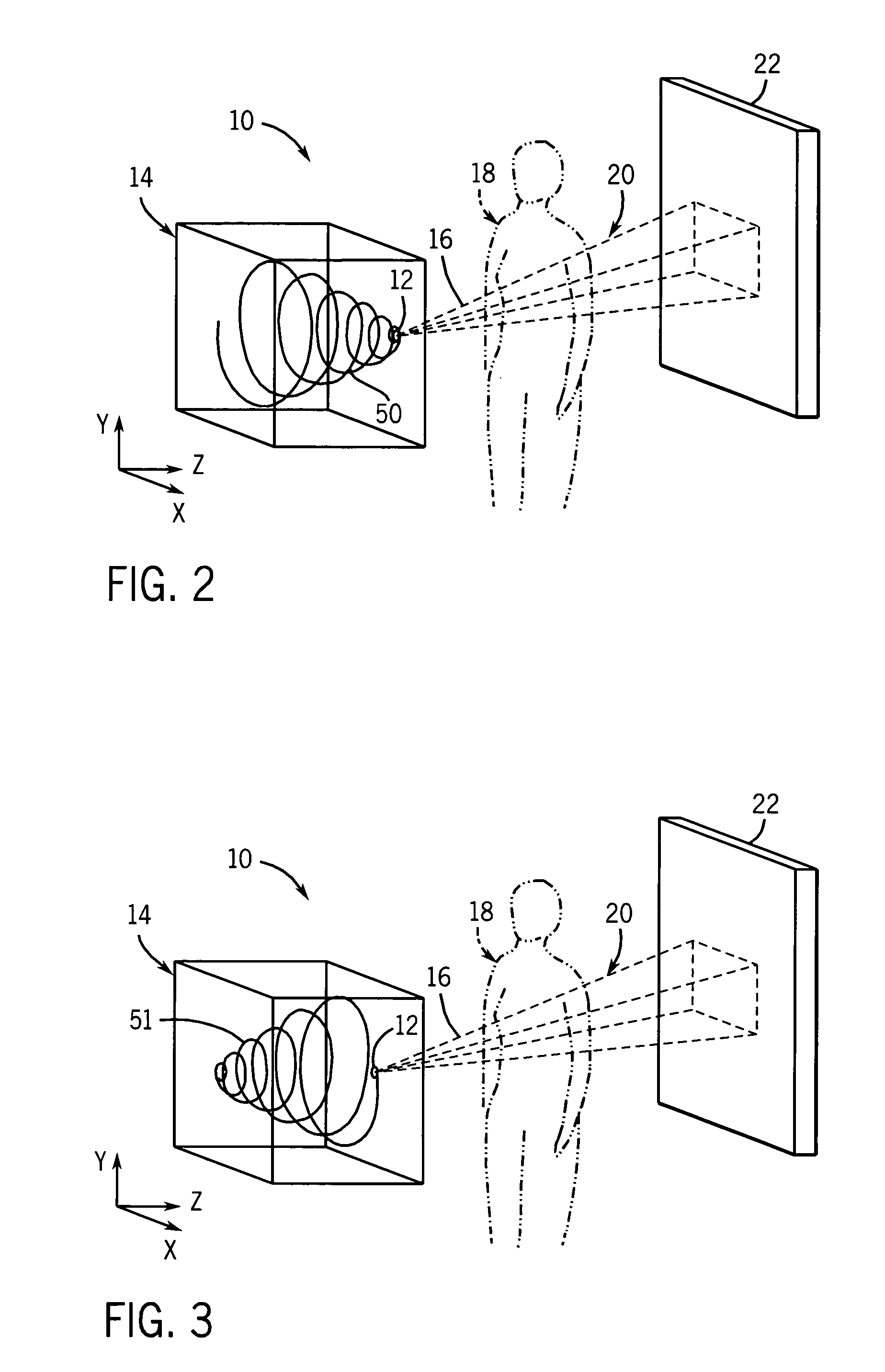Method and system for imaging a volume using a three-dimensional spiral scan trajectory
a spiral scan and volume technology, applied in the field of medical imaging, can solve the problems of affecting the resolution of the plane parallel, the quality the general limitation of the projection data,
- Summary
- Abstract
- Description
- Claims
- Application Information
AI Technical Summary
Benefits of technology
Problems solved by technology
Method used
Image
Examples
Embodiment Construction
[0016]In the field of medical imaging, various imaging modalities may be employed to non-invasively examine and / or diagnose internal structures of a patient using various physical properties. One such modality is tomosynthesis imaging which utilizes a limited number of projection radiographs that are each acquired at a different angle relative to a patient. The projection radiographs may be combined to generate a set of data that provides three-dimensional context and structure for the volume of interest. Typically, the projection radiographs are generated using an X-ray source moving in a plane parallel to a detector. The X-ray source may move in one or two dimensions within the plane. The linear and / or planar movement of the X-ray source effectively limits the depth resolution that may be achieved in three-dimensional images reconstructed from the acquired projection data. The present technique is directed to the improvement of depth resolution by incorporating motion along the de...
PUM
| Property | Measurement | Unit |
|---|---|---|
| heights | aaaaa | aaaaa |
| depth | aaaaa | aaaaa |
| tomosynthesis imaging | aaaaa | aaaaa |
Abstract
Description
Claims
Application Information
 Login to View More
Login to View More - R&D
- Intellectual Property
- Life Sciences
- Materials
- Tech Scout
- Unparalleled Data Quality
- Higher Quality Content
- 60% Fewer Hallucinations
Browse by: Latest US Patents, China's latest patents, Technical Efficacy Thesaurus, Application Domain, Technology Topic, Popular Technical Reports.
© 2025 PatSnap. All rights reserved.Legal|Privacy policy|Modern Slavery Act Transparency Statement|Sitemap|About US| Contact US: help@patsnap.com



